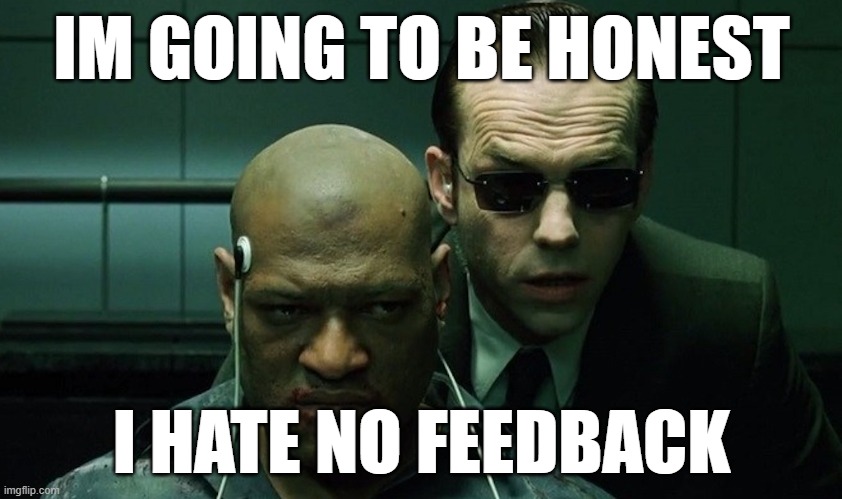
- Nov 05 2024
- 9 min read
Open House Feedback Form: The Ultimate Guide to Getting Honest Feedback (That Actually Helps You Sell)
Let's be real - collecting feedback at open houses can be a total pain. But here's the thing: if you're not gathering visitor insights, you're basically throwing away valuable data that could help you sell properties faster (and for more money).
This guide will show you exactly how to create feedback forms that people actually want to fill out, and more importantly, how to use that feedback to close more deals.
Quick Summary
- Feedback forms aren't just paperwork - they're your secret weapon to gather feedback and understand what buyers really think
- Good forms = better insights = faster sales (it's really that simple)
- Digital forms are amazing for automation, but don't throw away those paper forms just yet (some people still love them)
Why You Absolutely Need Open House Feedback Forms
Look, I get it. The last thing you want to do is bug people to fill out forms when they're trying to envision their dream home. But here's why you're shooting yourself in the foot if you skip this step: You need to collect information to gain valuable insights.
- You'll actually understand why people aren't making offers (instead of just guessing)
- Sellers will trust you more when you can back up your suggestions with real visitor data from potential buyers
- You'll spot patterns in what buyers love (and hate) about properties
This feedback is crucial for making informed decisions regarding future sales and potential improvements to the property.
Think about it: Instead of telling your seller “I think we should repaint”, you can say “80% of visitors mentioned the orange walls were a deal breaker”. That's the difference between a suggestion and a fact-based recommendation.
Creating Open House Feedback Forms People Actually Want to Fill Out
Let's face it - most open house feedback forms are about as exciting as watching paint dry. But they don't have to be. The secret to creating forms that actually get filled out is understanding the psychology behind what makes people want to share their thoughts and offer suggestions for improvement.
The Questions That Actually Matter
Your open house feedback form needs to strike that perfect balance between getting useful information and not overwhelming visitors. Think of it like a first date - you want to collect information about them, but nobody likes an interrogation.

The best questions are the ones that give you actionable insights. Here's what your form absolutely needs to include:
- “What's the first thing that caught your eye when you walked in? (Good or bad)”
- “What's the ONE thing you'd change about this house?”
- “Is the price right? If not, what would you pay?”
- “Would you consider making an offer? If not, why?”
But here's where most agents mess up - they forget to add context questions. You need to know who's giving the feedback and where they are in their buying journey. Include soft questions like “How long have you been looking?” and “What's your ideal move-in timeline?”. These give you crucial context without being pushy.
A real estate agent can utilize these open house feedback forms to capture valuable insights from prospective buyers, helping them understand buyer preferences and improve the selling process.
Design That Doesn't Suck
The design of your open house sign and feedback form is just as important as the questions you're asking. Think about it - when was the last time you enthusiastically filled out a cluttered, confusing form? Yeah, exactly.
Great form design isn't just about making things pretty (though that helps). It's about creating a flow that feels natural and effortless. Start with broad questions about first impressions, then drill down into specifics about different areas of the home. End with those all-important contact details - but make them optional. Nothing kills form completion rates faster than forcing people to hand over their info.

Digital vs. Paper Open House Feedback Forms: The Real Deal
The debate between digital and paper forms isn't just about personal preference - it's about understanding your audience, maximizing response rates, and finding ways to save time. Let me break this down for you with some real talk.
Digital Forms: The Future is Here (And It's Actually Pretty Great)
Digital open house feedback forms are revolutionizing how we collect and analyze visitor insights. With platforms like Google Forms and specialized real estate software, you can now track responses in real-time, receive feedback from attendees, and spot trends the moment they emerge.
The beauty of digital forms lies in their flexibility. You can instantly modify questions based on what's working (or not), send automated follow-ups, and create beautiful reports that actually impress sellers. Plus, integration with your CRM means you're building your database while collecting feedback - talk about killing two birds with one stone.
But here's the real game-changer: digital forms can adapt based on responses. If someone mentions they love the kitchen, your form can automatically ask more detailed questions about what specifically caught their eye. Try doing that with paper!
Paper Forms: The Surprising Comeback Kid
Just when you thought paper forms were dead, they pull you back in. And for good reason. Property owners find that paper open house feedback forms have some unique advantages that digital just can't match (yet).
First off, there's something psychologically different about writing by hand. People tend to give more thoughtful, detailed responses when they're physically writing them down. Plus, paper forms work everywhere - no Wi-Fi required. And let's be honest, some of your highest-value buyers might be in that demographic that prefers traditional methods.
The trick with paper forms is to make them feel premium. Use quality paper, clear formatting, and plenty of white space. Think of it like staging a house - presentation matters.

Tools That Make Creating Open House Feedback Forms a Breeze
Choosing the right tool for your open house feedback forms can make the difference between collecting meaningful insights and just gathering useless data from real estate professionals. Let's dive into the options that actually work in the real world.
Google Forms: The Swiss Army Knife of Feedback
Google Forms remains the go-to choice for many agents, and for good reason. It's like the starter home of the feedback form world - it gets the job done, it's reliable, and it's free. The platform has evolved to include features like conditional logic, file uploads, and customizable themes that make it feel way more premium than it used to.
The real power of Google Forms lies in its integration with Google Sheets. You can automatically populate spreadsheets with responses, create pivot tables to analyze trends, and share insights with sellers in real-time. Plus, the mobile optimization is fantastic - crucial for open houses where people are filling out forms on their phones.
Advanced Tools Worth Your Time
While Google Forms is great for getting started, specialized tools can take your feedback game to the next level. JotJab, for instance, offers real estate-specific templates and features that make creating professional open house feedback forms a snap. pdfFiller is perfect if you need both digital and print versions of your forms - it lets you create forms that look identical whether they're on a screen or paper.
For those ready to invest in a more robust solution, many CRM platforms now include customizable feedback form builders. These tools can automatically sync responses with your contact database and trigger follow-up sequences based on visitor responses.

Ready to create your first form?
Form customization for anyone -- simple and powerful.
Getting People to Actually Fill Out Your Open House Feedback Forms
Here's the million-dollar question: How do you get people to actually complete your feedback forms? The answer isn't just about offering incentives (though that helps). It's about creating a feedback culture that makes people want to share their thoughts.
The secret sauce is making the process feel valuable for the visitor, not just for you. Start by explaining how their feedback helps other buyers - people love feeling like they're helping others. Then, make the process as painless as possible. No one wants to spend 15 minutes filling out a form when they could be imagining themselves in their potential new home.
Timing is everything. The best moment to ask for feedback is right when someone's finishing their tour, while their impressions are fresh. Have your form ready to go (whether digital or paper) and make it part of your natural conversation flow. Something like, "What did you think of the master suite? Actually, would you mind sharing that feedback in our form? It really helps us improve our showings."
And yes, incentives work wonders. But get creative! Instead of just offering a Starbucks gift card, try something more memorable. Maybe a local restaurant gift card or a donation to a local charity in their name. Make it meaningful, and people will respond. Utilize a Broker Open House Feedback Form during the next open house to gather insights from potential buyers and enhance the overall experience for visitors.
Actually Using Your Open House Feedback Form Data (Instead of Letting It Collect Digital Dust)
Real estate agents, look, collecting feedback is great and all, but if you're not actually using it, you might as well be collecting lint. The real magic happens when you turn all those open house feedback form responses into actionable insights that help you sell properties faster.
Finding the Gold in Your Feedback
Here's the thing about feedback - it's messy. You'll get everything from "the kitchen is too small" to "I don't like the neighbor's cat." The trick is knowing how to sort through this chaos to find patterns that actually matter.
Start by grouping similar feedback into categories:
- Property condition issues (paint, repairs, updates needed)
- Price feedback (too high, too low, "maybe at X price")
- Layout concerns (flow, room sizes, storage)
- Location comments (neighborhood, noise, accessibility)
- Presentation feedback (staging, cleanliness, curb appeal)
But don't just count problems - look for positive patterns too! If 80% of visitors love the backyard, that's your marketing gold right there.

Turning Feedback into Action (That Actually Sells Houses)
Here's where most agents drop the ball - they collect feedback but never do anything with it. Big mistake. Here's how to turn those insights into sold properties:
The Quick Wins
These are the easy fixes that make an immediate impact:
- If multiple visitors mention the house smells like dogs, get it professionally cleaned
- When everyone complains about dark rooms, boost the wattage and add some strategically placed lamps
- If the consensus is "cluttered," time to have a heart-to-heart with your seller about decluttering
The Bigger Strategic Moves
Sometimes the feedback points to bigger issues that need addressing:
Let's say your open house feedback forms consistently show that buyers love the house but hate the price. That's not just a pricing issue - it's a value perception problem. Maybe you need to:
- Adjust your marketing to better highlight the property's unique features
- Create a value comparison sheet showing similar sold properties
- Consider a price adjustment if the market feedback is consistent
Making Data-Driven Decisions That Impress Sellers
Here's a pro tip: Sellers are way more likely to accept tough feedback when you can show them the data. This helps them make informed decisions. Instead of saying "I think we should lower the price," you can say "Out of 30 visitors this month, 25 said they'd make an offer if the price was $25k lower."
Create a simple feedback dashboard for your sellers that shows:
- Total number of visitors
- Common praise points (what people love)
- Common objections (what's holding them back)
- Price feedback trends
- Specific suggestions for improvements

The Continuous Improvement Loop
Think of your open house feedback form as part of a continuous improvement cycle. Each open house is an opportunity to:
- Collect fresh insights
- Test new improvements based on previous feedback
- Track what's working (and what isn't)
- Refine your approach
For example, if you make changes based on feedback, track whether those changes are mentioned positively in future open houses. Did replacing the old carpet with hardwood actually make a difference? Your feedback forms will tell you.
Remember: The goal isn't just to collect feedback - it's to use that feedback to sell houses faster and for better prices. Every piece of feedback is a clue telling you how to make that happen. Don't waste it!
The Bottom Line
Open house feedback forms aren't just bureaucratic nonsense - they're a powerful tool that can help you sell houses faster and make more money. But only if you do it right.
Start with a simple form, make it easy to fill out, give people a reason to complete it, and actually use the feedback you get. Do this, and you'll be amazed at how much more effective your open houses become.
Remember: Every piece of feedback is another step closer to a sale. Don't waste these golden opportunities to learn exactly what buyers want (and what's stopping them from making an offer).
Now get out there and start collecting that feedback! Your future self (and your sellers) will thank you.